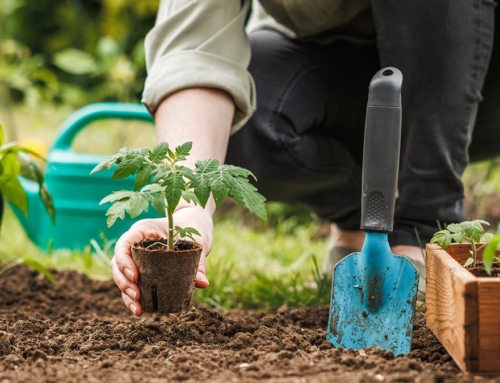GARDENING FOR BEGINNERS

Northern Colorado is a great place to start your journey as a gardener. With our sunny and dry climate, you can grow a variety of plants, vegetables and fruits.
If you’re new to gardening, here are some tips from the experts at Detailed Landscape. We’ll help you take the first steps.
1. Determine your garden’s location and size
The first thing you need to decide is where you want to have your garden and how big it should be. Choose a location that receives a minimum of six hours of sunlight daily and has easy access to water. Consider the size of your garden based on the number of plants you want to grow and the available space.
2. Pay attention to your soil
Northern Colorado has high alkaline soil with a pH between 7.5 to 8.5. Because of this, it’s essential to amend the soil to provide the right nutrients to your plants. You can add organic matter like compost, manure and peat moss to improve the soil structure. We love adding compost to a garden. Not only does it cut down on your overall waste, it also provides great nutrients for your soil. If you have questions on composting, check out this guide from our team.
3. Pick the right plants
It’s vital to choose plants that are well-suited to the Northern Colorado climate. Select plants that can tolerate hot summers and cold winters. Some good options for this region include tomatoes, peppers, cucumbers, zucchini, pumpkins, and melons.
4. Determine your watering schedule
Watering is crucial for plant growth, but it’s important not to overwater. Determine your watering schedule based on the needs of your plants, the type of soil, and the climate. Northern Colorado has low humidity, so you may need to water more frequently. Consider using drip irrigation or soaker hoses to conserve water while also paying attention to the time of day that you’re doing most of your watering. During hot summer days, early morning and late evening watering will mitigate evaporation and ensure your water gets to where you want it to go.
5. Fertilize your plants
Plants need nutrients to grow, and you can provide that through the right type of fertilizer. Choose a balanced fertilizer that contains nitrogen, phosphorus and potassium. You can also use organic fertilizers like fish emulsion, compost tea or bone meal.
Need more direction? Here’s more information on fertilizers along with a list of some of our favorites for the Front Range.
6. Protect your garden from pests
Pests like rabbits, deer and squirrels can damage your garden. Consider using physical barriers like fences or netting to keep them out. You can also use natural pest control methods like companion planting, planting herbs that repel pests, and using organic pesticides.
Starting a garden requires planning and preparation, but it’s a rewarding experience! With these tips you’ll be well on your way to growing a healthy and productive garden. Remember to start small, learn from your mistakes and have fun experimenting with different plants and growing techniques.






